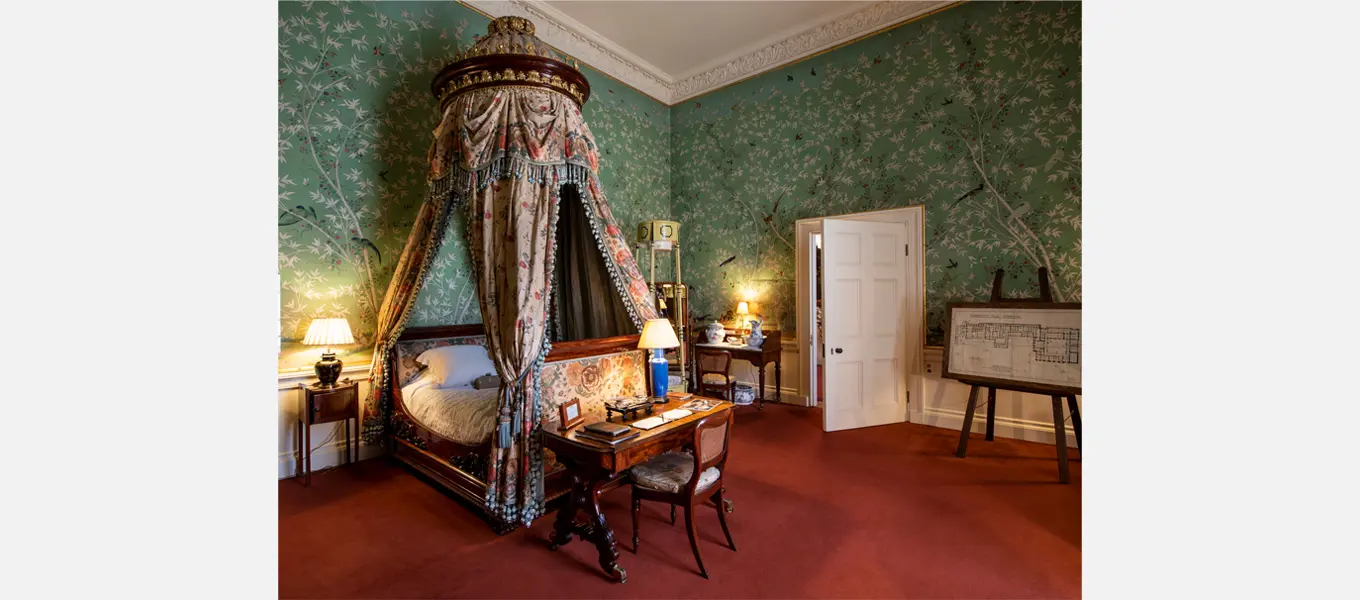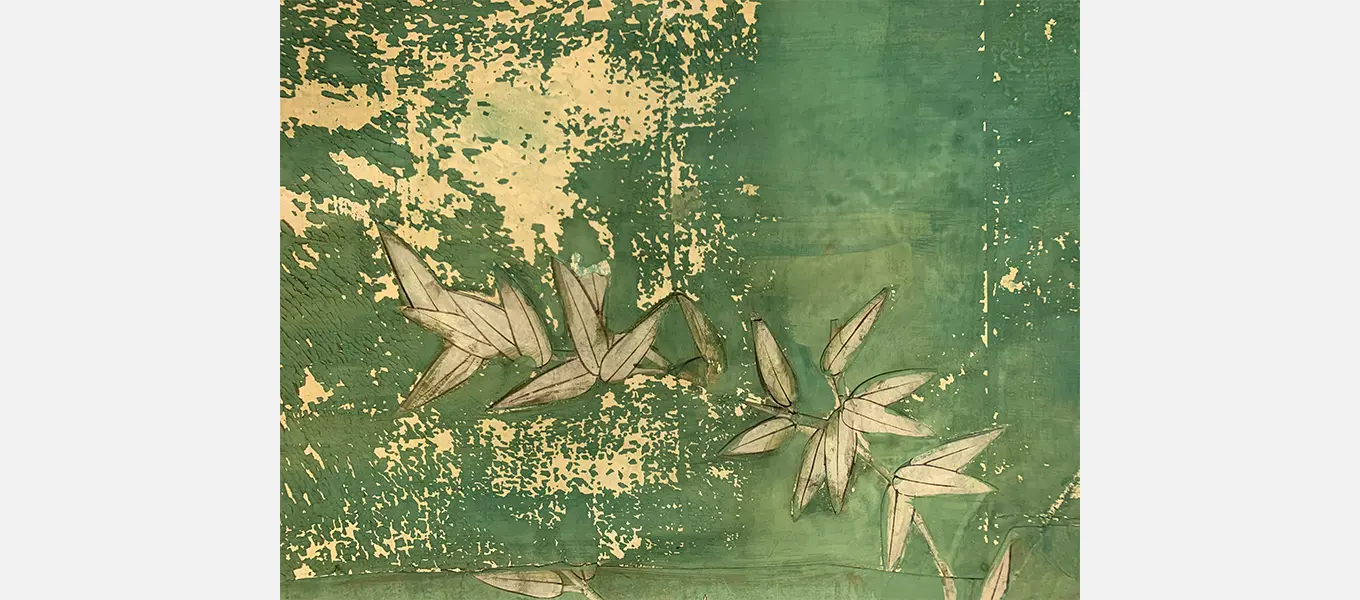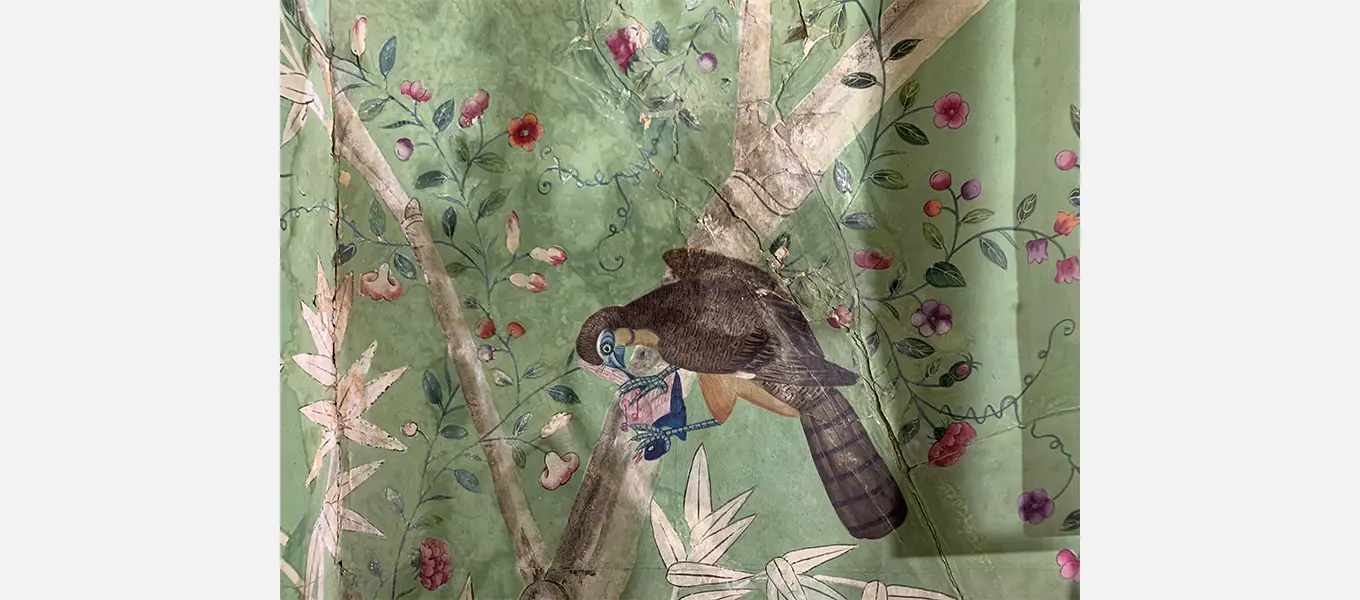Whilst the devastating impacts of the pandemic meant that Chatsworth had to close its doors to friends and visitors, it did allow our collections team the chance to complete a major project – the conservation of the Queen of Scots Dressing Room wallpaper.

The hand blocked and painted Chinese wallpaper is one of the most widely recognised prints within Chatsworth.
Believed to have been made around 1790, it wasn’t hung until the 1830s when the 6th Duke of Devonshire decided to re-decorate the guest bedrooms. The papers were made in Guangzhou (formerly Canton) in South East China and exported to Europe. Although the Chinese had a tradition of using decorated papers in their homes, wallpapers as we would recognise them were exclusively made for the export market. They became increasingly popular in England during the 1700s, especially among educated aristocratic women who would host literary groups and discuss current affairs and politics in rooms which were decorated with the intricate paper designs.
Specialist wallpaper conservators were employed to help the collections team take a closer look at the damage that had appeared through the years.
The way this style of wallpaper is constructed was been partly the cause of its damage. To make the wallpaper richer and disguise joins in the paper, it was common to add extra elements such as the abundance of birds and flowers found in the Queen of Scots Dressing Room. As the additional pieces have been added over time, the adhesive glues have dried and aged in different ways, leading to visible seams and the paper contracting.

The conservators also found evidence of water damage – this had since been painted over, leading to a bubbling effect under the surface and causing the wallpaper to peel.

To best conserve the paper the team identified past repairs that needed fixing and began to re-line and re-attach, while areas of loss were re-toned.
With the room empty of furniture it was possible to see a number of symbols painted on the bottom edge of the paper. These have been translated as a series of numbers, probably used to indicate the sequence in which the papers should be hung. On reviewing the symbols it appears the panels were not hung using this sequence; this is not surprising as it’s unlikely the paper hangers would have known how to read them.
This project prompts a number of avenues for further research including when and where the papers were purchased, as well as why the 6th Duke chose to use this older type of paper when newer Chinese papers, made fashionable again by the Prince Regent at Brighton were available.

Curator of Decorative Arts at Chatsworth, Sash Giles commented "conservation and research projects provide exciting ways to build our knowledge of our collections and to share that knowledge inviting collaborations with researchers, academics, artists and other collections".
In order to continue vital conservation projects and meet our charitable objectives, we look to you for support. Chatsworth is a registered charity and relies on income from visitor admissions to the house, garden and farmyard, the Friends and Patrons of Chatsworth programmes as well as sponsorship and grant funding.
Learn more about how you can support the charity by visiting the link below.






